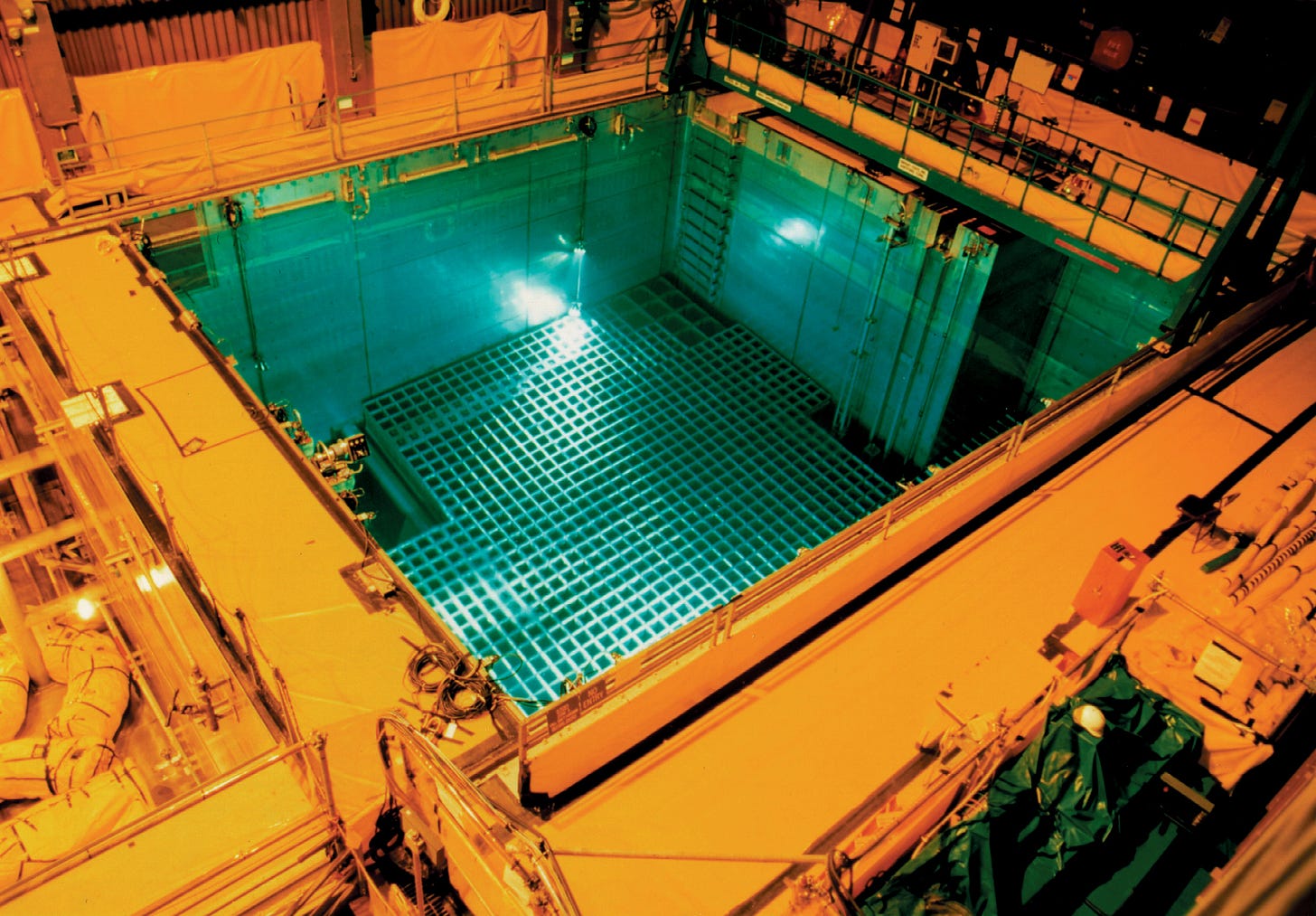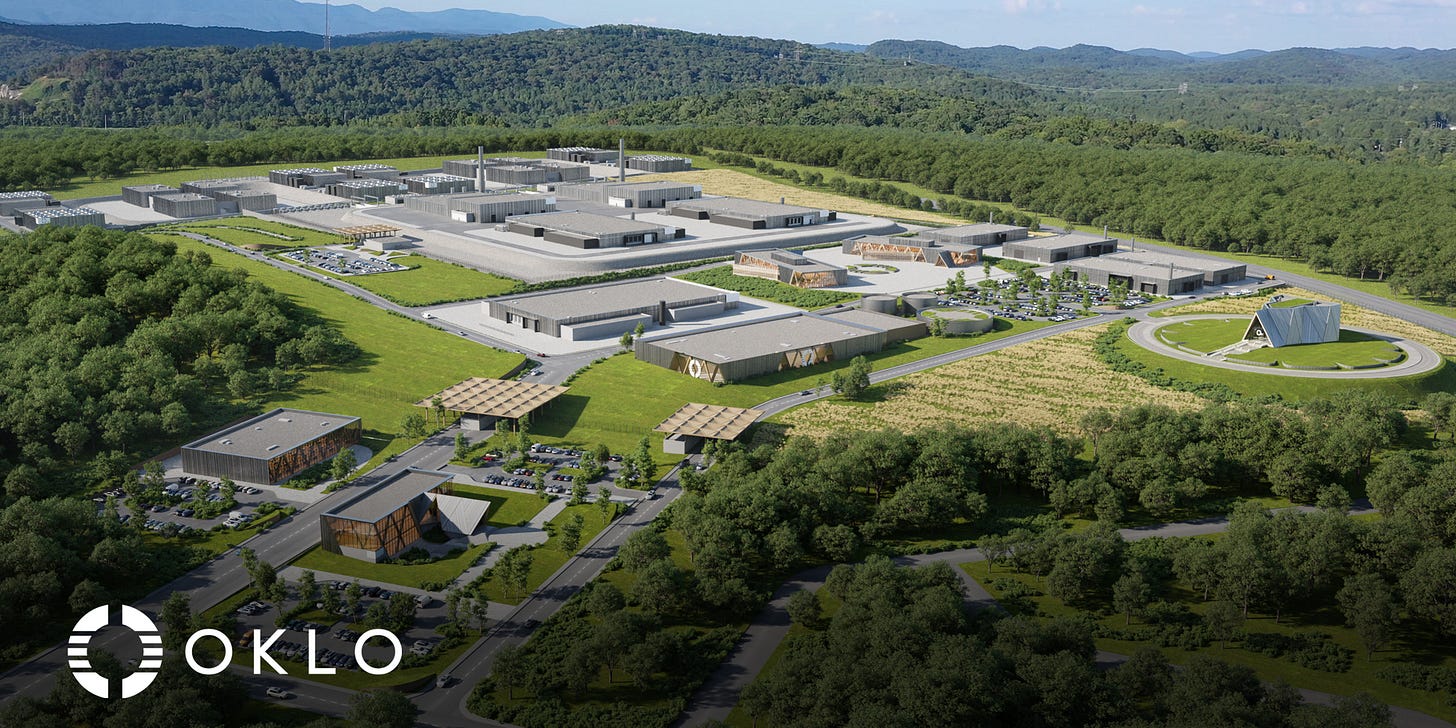Oklo’s "Waste to Gigawatts" Pitch Faces Historical Failures
Oklo presents its plan to create an energy resource from spent nuclear fuel, while experts point to abundant uranium and the high cost of reprocessing that has historically derailed the industry.
On Sept. 4, 2025, Tennessee officials announced they will partner with Oklo Inc., a California-based advanced nuclear technology company, to design, build, and operate a nuclear fuel reprocessing facility at the Oak Ridge Heritage Center in Roane County. The project is a $1.68 billion investment and will create 812 jobs. Oklo describes the project as the first phase of an advanced fuel center and expects to begin reprocessing fuel in the early 2030s, pending regulatory approval.
The Tennessee Valley Authority, the nation’s largest public power provider, confirmed it has only a non-binding memorandum of understanding with Oklo at this stage. The utility said the agreement allows it to “explore strategic opportunities” that could later lead to more definitive projects.
State leaders frame the project as a win for jobs and clean energy. Oklo calls it the nation's first privately funded reprocessing plant. The public role is not zero. Tennessee will award Oklo a $13 million grant from the state's Nuclear Energy Fund, and the City of Oak Ridge will receive $3 million for the transfer of 166 acres at the site.
The stakes are high because the United States has tried commercial reprocessing before and failed. West Valley in New York operated, then shut down due to high costs, and left a cleanup that still costs money and time. General Electric's Morris, Illinois plant never started up and was repurposed for fuel storage. The Barnwell project in South Carolina was left unfinished after a shift in federal policy. Those efforts collapsed under economic pressures, new regulations, and proliferation concerns, with taxpayers ultimately covering the long-term cleanup costs.
Oklo’s plan tests whether new technology, a different business model, and today’s market can change the outcome. The company says the Oak Ridge plant would recover materials from spent nuclear fuel and supply metal fuel for fast reactors such as its Aurora design. Success depends on licensing, cost, waste management, and demand. Failure would leave Tennessee asking who pays — the company or the taxpayers.
U.S. Reprocessing History 101
To understand the context behind Tennessee's investment in Oklo, it is essential to understand what reprocessing is and its history. According to the Nuclear Regulatory Commission, reprocessing refers to the chemical separation of spent nuclear reactor fuel so the materials can be recycled and re-fabricated into new fuel.
Spent fuel is the used fuel taken from a nuclear reactor after it is no longer useful. It is mostly uranium, with some plutonium formed during operation. It is very radioactive and hot. It must be stored safely, either in water pools or dry casks.
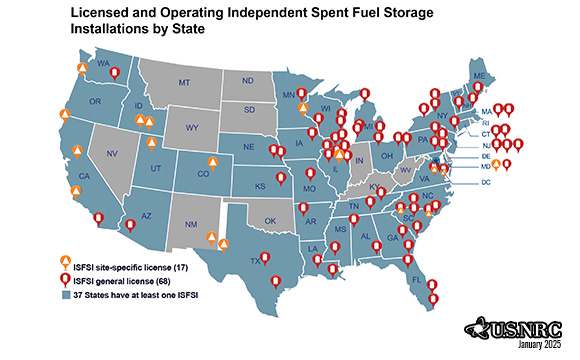
According to the Department of Energy, since the 1950s, U.S. commercial reactors have produced about 90,000 metric tons of spent fuel. Stacked together, it would cover a single football field to a depth of less than 10 yards. About 95% of spent fuel is still uranium that could be recovered, according to a 2025 Congressional Research Service report.
The Atomic Energy Commission was created in 1946 to manage the development, use, and control of atomic energy for military and civilian applications. According to a 2008 CRS timeline, the AEC promoted commercial reprocessing in the 1950s and 1960s as part of a postwar push for nuclear power. The nation’s first and only commercial reprocessing plant opened in 1966 in West Valley, New York. Other commercial attempts followed. General Electric halted its Morris, Illinois plant before startup and relicensed it to serve only as a storage site. A Barnwell, South Carolina facility was left unfinished after the Carter administration deferred reprocessing indefinitely in 1977.
Asked why past reprocessing ventures failed, Matthew Bunn, Ph.D., a professor at the Harvard Kennedy School who leads a research group on nuclear weapons and energy, said in a Zoom interview:
Past reprocessing proved to be extraordinarily expensive and uneconomic for the nuclear industry.
Bunn, who also co-authored a 2003 Harvard study on the economics of reprocessing, explained how it was initially thought that reprocessing wouldn’t be so expensive, and uranium would be scarce and costly. “That has proved not to be the case. The uranium is abundant,” he added.
In 1974, Congress split the AEC into the Nuclear Regulatory Commission to handle licensing and the Energy Research and Development Administration — later becoming the DOE — to handle development. That change coincided with economic costs, tighter safety rules, and rising concerns about proliferation, pushing the industry into decline.
Presidents then took sharply different approaches. President Ford first warned against the proliferation risks of plutonium separation in 1976. President Carter canceled federal support the following year, effectively ending Barnwell. In 1981, President Reagan lifted the ban, but no private company followed through. In 1993, President Clinton reiterated that the United States would not encourage civilian plutonium use.
By the mid-2000s, the DOE revived reprocessing research through the Global Nuclear Energy Partnership, which sought proliferation-resistant methods such as pyroprocessing. Still, a National Academies review found “no economic justification” for moving ahead at commercial scale. In 2021, the NRC discontinued work on a dedicated reprocessing rule, citing high costs and little industry interest in applying for a license in the near term. This decision effectively left the United States without an active commercial reprocessing pathway.
Today, Oklo’s Oak Ridge proposal is the first private-sector attempt in decades to reintroduce reprocessing into the U.S. commercial fuel cycle.
Oklo’s Bid in Tennessee Tied to Aurora’s Fate
Oklo describes the Oak Ridge project as the nation's first privately funded nuclear fuel reprocessing facility. This stands in contrast to past commercial efforts, such as those in West Valley, which, although privately operated, relied heavily on government funding.
That privately funded distinction, however, is not absolute. Tennessee is offering its own support. Through its $70 million Nuclear Energy Fund, the state awarded Oklo a $13 million grant. In addition, the City of Oak Ridge received a $3 million grant for transferring 166 acres at the Heritage Center. The fund was created in 2023 by Gov. Bill Lee to provide grants and assistance for nuclear power-related businesses that relocate or expand in Tennessee. Additional incentives include job tax credits, industrial machinery credits, and sales tax exemptions for qualifying nuclear projects.
Tennessee is well-positioned to lead America’s energy independence, which is why we created the Nuclear Energy Fund,
Gov. Lee said in the press release. “We’re proud to partner with Oklo to innovate for the future.”
Oklo presents the Oak Ridge facility as essential to its broader business model. The recycling plant will recover usable material from spent fuel and fabricate it into metal fuel for fast reactors like the company's Aurora powerhouse. That connection shows the Oak Ridge project depends on the progress of Aurora. Oklo has begun site work on Aurora in Idaho. Still, no reactor is yet operating to consume recycled fuel, leaving the Oak Ridge facility without an active customer for the time being.
TVA, however, is considering a role. In an emailed response, Scott Fiedler, TVA spokesperson, explained that its exploration with Oklo includes both the option of supplying used fuel for recycling and the possibility of purchasing electricity from Oklo's future reactors.

By recycling used fuel at scale, we are turning waste into gigawatts, reducing costs, and establishing a secure U.S. supply chain,
said Oklo co-founder and CEO Jacob DeWitte in the press release.
The NRC will decide whether Oklo's Aurora reactor and the Oak Ridge recycling facility can proceed. That level of scrutiny is not new. The nation's only attempt at commercial reprocessing in West Valley collapsed under shifting regulations, poor economics, and rising costs. Decades later, taxpayers are still paying for the cleanup.
West Valley: A Cautionary Tale
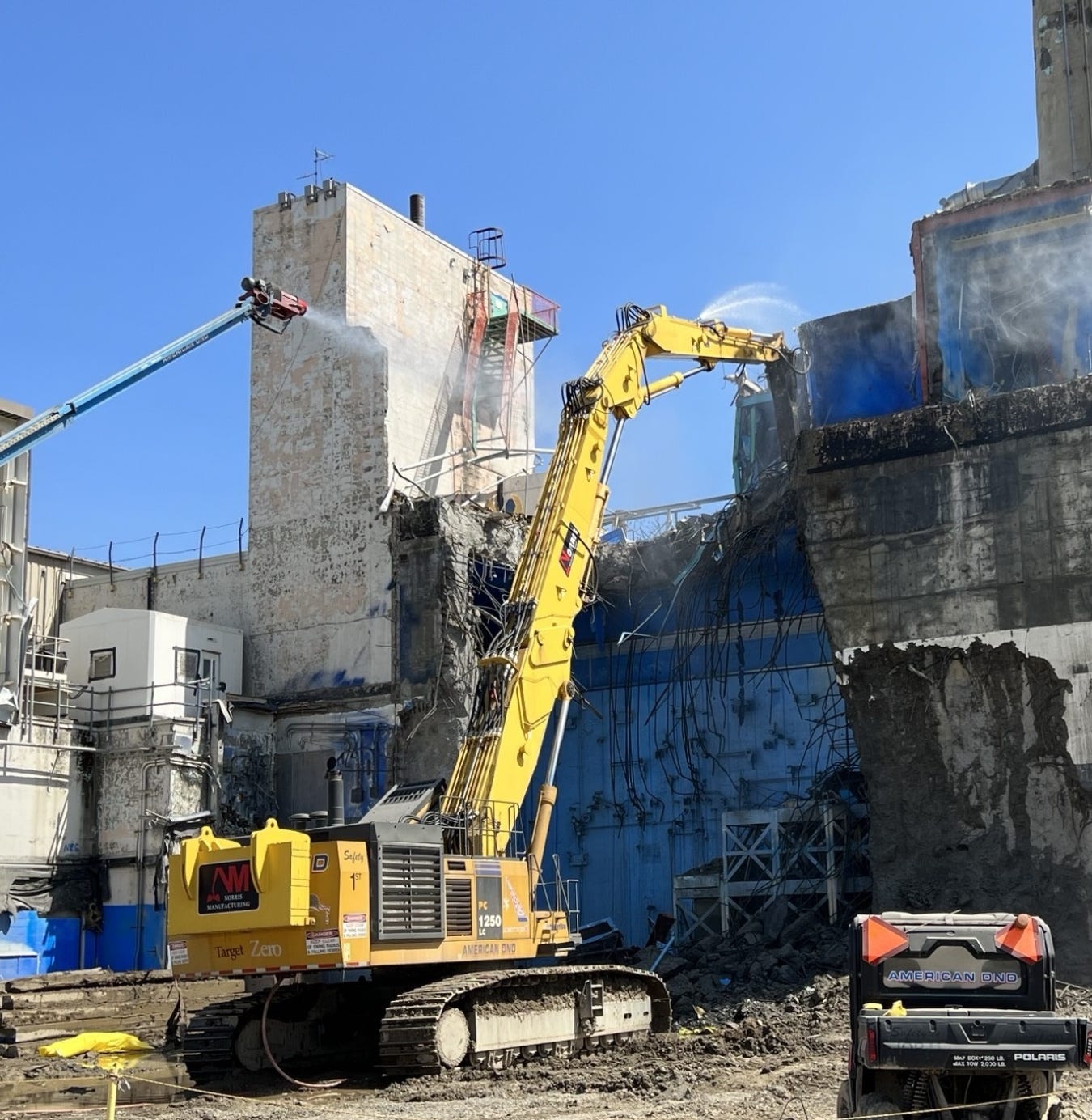
The only U.S. commercial reprocessing plant to ever operate ran at West Valley, New York, on a state-owned site managed today by the New York State Energy Research and Development Authority. In 1962, Nuclear Fuel Services entered into agreements with the AEC and the state of New York to construct the first commercial reprocessing plant in the nation. NFS, a private Tennessee-based company, reprocessed 640 metric tons of spent fuel at the West Valley plant from 1966 to 1972 under an AEC license.
In 1972, NFS paused operations at the plant to make improvements initially expected to cost $15 million. When the NRC formed, it developed new regulations for waste management and seismic protection. Due to these regulations, the company later estimated that the needed modifications would cost $600 million. Adjusted for inflation, this 1976 figure equals $3.4 billion today. In 1976, NFS exercised its contractual right and notified NYSERDA that it would not resume operations and turned responsibility for the facility back over to the state.
During its operation, the facility generated over 600,000 gallons of liquid High-Level Waste, which was stored underground. The cleanup scale was beyond the state's capacity to manage alone. In 1980, Congress passed the West Valley Demonstration Project Act, requiring the DOE to solidify the HLW into glass through vitrification. This process was completed in 2002. Much of the work of the WVDP — including decommissioning the site — continues to this day.
The West Valley site also left behind environmental contamination. A 1968 airborne material release created a "cesium prong" that settled into nearby creeks. Aerial surveys in 2014 still detected low but measurable cesium-137 along these pathways. However, levels declined relative to 1984 due to radioactive decay and weathering. On-site, DOE and NYSERDA continue to manage buried waste, soil contamination, and a groundwater plume. Erosion and creek migration pose risks of further spreading radioactive material.
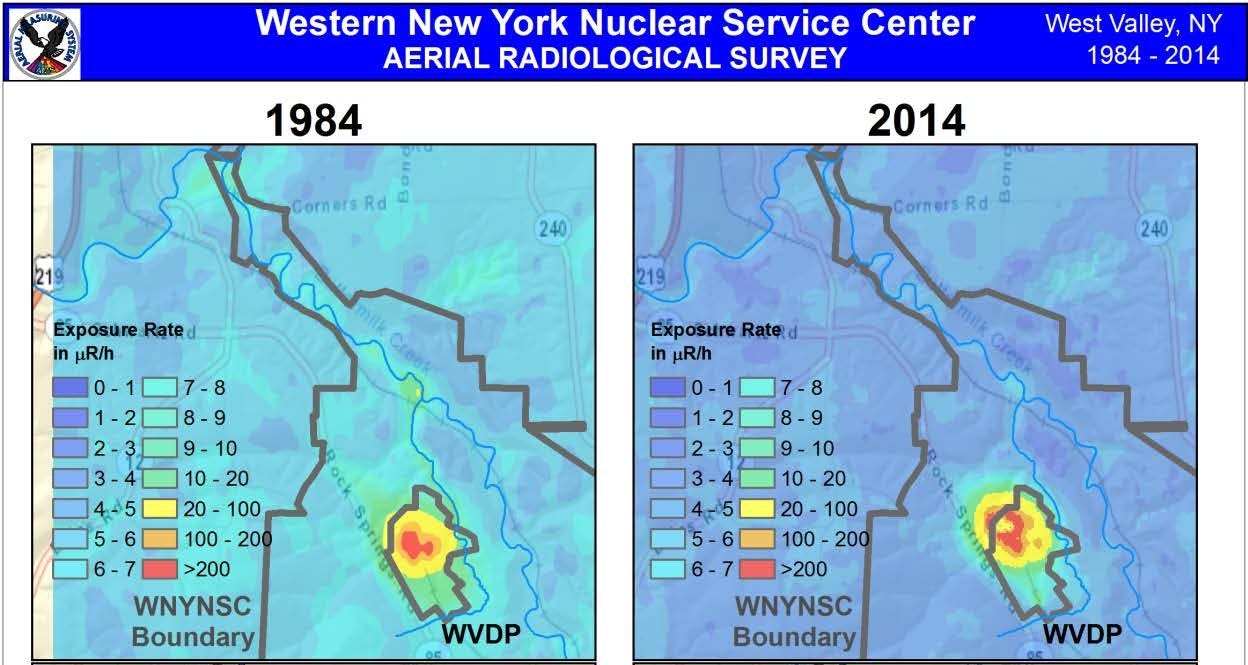
This cleanup has not come without financial costs. According to a GAO report, as of February 2020, the DOE had spent approximately $3.1 billion on contracted cleanup activities for the project since 1984. Additionally, in October 2024, the DOE awarded a 10-year, $3 billion maximum value contract to West Valley Cleanup Alliance for decommissioning and demolition work. The total project cost cannot yet be fully estimated, as DOE has not made a Phase 2 decommissioning decision for the remaining waste. Current planning shows overall cleanup anticipated through 2043, 71 years after the plant ceased operations.
Depending on the Phase 2 decision, the additional cost to complete Phase 1 and Phase 2 decommissioning could range between $1.4 billion and $10.6 billion These estimates are inflation-adjusted from fiscal year 2008 to fiscal year 2019 dollars.
West Valley failed under mounting costs and shifting rules. Oklo counters that a phased approach, strict cost controls, and recycling spent fuel into new fast-reactor fuel make today’s effort different. The economics will decide if those claims hold.
The Economics of Reprocessing

Reprocessing in the United States has historically failed on economic grounds. Despite prior assumptions, uranium supplies remained abundant and inexpensive, and reprocessing was far costlier than expected. As a result, most reactors today still operate on freshly mined uranium, rather than recycled material.
The 2003 Harvard study found that for reprocessing to break even at a typical cost of $1,000 per kilogram of heavy metal processed, uranium would need to cost about $370 per kilogram. Even under best-case assumptions, the breakeven threshold was around $220/kgU — levels far above any historical uranium price. At higher reprocessing costs, such as $2,000/kgHM, the breakeven uranium price would soar to nearly $950/kgU. The report concluded such prices were “not likely to be seen for many decades to come.” By comparison, as of August 2025, uranium trades at roughly $165/kgU.
Ratepayers may also see limited economic benefits. Bunn noted that reactor capital costs dominate nuclear electricity costs, while fuel cycle costs make up only a small 5% share. Fast reactors, which Oklo hopes to supply, have historically been more expensive than conventional light water reactors.
Fast reactor vendors always say, 'Oh, this one's going to be cheap,' I remain in the show-me category,
Bunn said.
Fiedler confirmed TVA’s three nuclear sites — Browns Ferry, Sequoyah, and Watts Bar — “have sufficient inventories of used fuel to support the option of fuel recycling.” But TVA did not answer whether reprocessing would affect customer rates, leaving open how any costs or benefits might reach ratepayers.
Oklo argues that its Oak Ridge facility changes the equation. In an emailed statement, Oklo’s Head of Communications and Media, Bonita Chester, said the case for fuel recycling is “compelling,” pointing to the nearly “$1 billion” that taxpayers spend annually on the storage of spent fuel across the country. The Clarity Digest could not independently verify that figure.
Asked about the $1.7 billion projection, Chester wrote:
The capital estimate reflects a detailed bottoms-up assessment that includes engineering, equipment, site development, licensing, contingencies, and inflation.
Bunn sees the numbers differently. Asked about Oklo's projected cost, Bunn said:
I would expect a dramatic price escalation.
He pointed to Japan's Rokkasho reprocessing plant — still under construction — with construction costs exceeding $25 billion, more than four times its original estimate. The latest schedule targets operation by March 2027, but repeated delays make that uncertain.
Anything that can handle spent fuel and plutonium is going to cost serious money,
Bunn said. Chester explained that Oklo will reduce the risk of cost and schedule overrun by structuring the project in phases and having agreements with partners for on-time and on-budget incentives.
The state of Tennessee says it has safeguards in place for its own incentives.
TNECD has measures in place, such as accountability agreements, with companies to ensure that they meet their job commitments in the timeframe of the incentive contract. If companies do not meet the requirements outlined in those agreements, they are subject to clawback provisions,
said Chris O'Brien, Public Information Officer for the Tennessee Department of Economic and Community Development, in an emailed statement. These clawbacks, however, would cover state grants, not long-term nuclear cleanup.
Currently, power plant operators must set aside funds for decommissioning as they operate their facilities. Still, no plan exists currently for reprocessing plants. Oklo insists the project is structured to avoid taxpayers absorbing the costs. "Oklo also assumes full life-cycle responsibility for its facilities, including eventual decommissioning," says Chester.
Bunn warns even if Oklo sets aside funds for decommissioning:
What if it only operates for a little while and only generates a little bit of revenue and then fails, which is pretty much what happened at West Valley,
he said. In that scenario, he suggested, the federal government might be forced to step in, with taxpayers again footing the bill.
A New Approach, an Old Problem
The reprocessing technology itself is part of the debate. Publicly available Oklo documents state that it intends to use pyroprocessing rather than traditional PUREX reprocessing. The company emphasizes the process's smaller footprint, lower staffing requirements, and reduced liquid waste. Bunn acknowledged that Oklo and others argue that pyroprocessing will be cheaper. Still, he noted:
The pilot facilities that were built for this purpose in Idaho many years ago and currently in South Korea are both fabulously expensive.
A 2017 report prepared for the DOE Office of Nuclear Energy by researchers at Idaho National Laboratory and other national labs concluded that pyroprocessing would actually be more costly than traditional methods, averaging about $2,600/kg, compared with roughly $1,277/kg for conventional reprocessing. In a follow-up email, Bunn explained, "The $2,600 figure was for reprocessing PLUS fabrication of the results into new fuel, which itself is quite expensive… but clearly, they weren’t expecting it to be a lot cheaper.” Bunn also noted, “no one will give you a traditional reprocessing contract for as little as $1,277 now.”
By contrast, dry cask storage offers a far lower-cost option. Bunn put the cost of safe, decades-long storage at $100 per kilogram, noting utilities would have to “set aside another 500 bucks or so for permanent disposal.” However, with no permanent repository such as Yucca Mountain, dry storage has become the default approach for U.S. utilities.
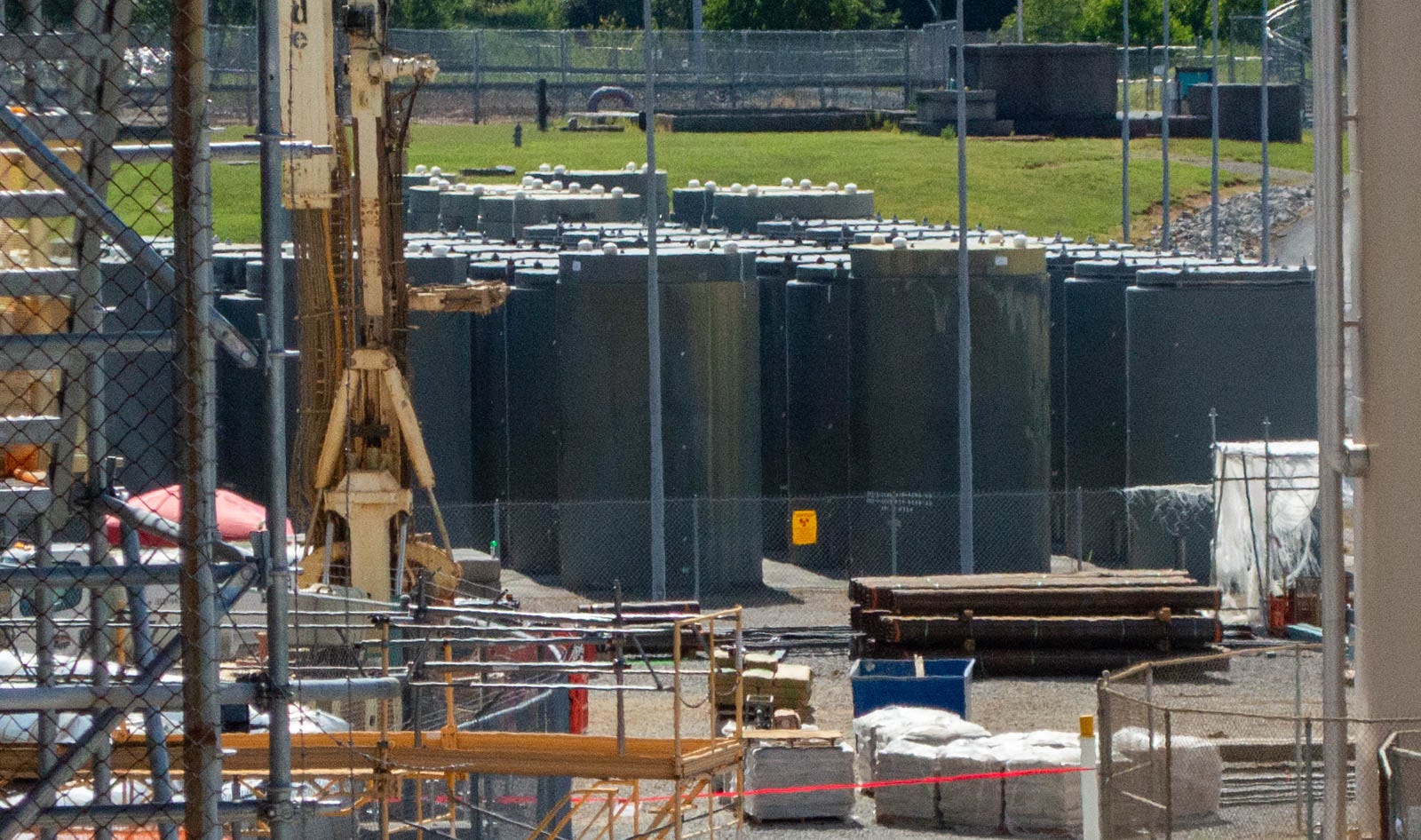
Beyond the financial risks, Oklo also argues its technology is "proliferation-resistant by design." Experts disagree, setting up the other central question for Tennessee's investment: how secure will this new approach be?
The Unseen Risk: Reprocessing and Nuclear Security
Reprocessing always involves handling plutonium and other actinides, and the safeguards for such material are far stricter today than when West Valley operated in the 1960s. The West Valley plant used traditional reprocessing, known as PUREX, which separates pure plutonium that can be used directly in nuclear weapons, raising its proliferation risk. Pyroprocessing produces a mixture of elements where plutonium is not separated in pure form, making it harder to misuse.
Oklo argues its process reduces those risks. "Our advanced recycling technology does not produce pure plutonium. Instead, actinides remain co-mingled and intensely radioactive, making the recycled material proliferation-resistant by design," Chester said. The facility:
will feature hardened structures, 24/7 protection, and strict material accounting to ensure every gram is tracked.
But "proliferation-resistant" is not proliferation-proof. Bunn references a Bush administration National Nuclear Security Administration report when describing the risk on a scale of A to Z. Bunn puts spent fuel as "A" — the lowest risk — and "Z" as the separation of pure plutonium, PUREX — the highest risk. The approach Oklo wants to take, pyroprocessing, is ranked as a "W." "In other words, not as bad, but almost," he added.
Bunn explains his concern:
You can make nuclear explosives potentially directly from the recycled material. But it's also much simpler to get pure plutonium out once you've separated all the stuff that the pyroprocessing separates.
For decades, U.S. policy has been to minimize civilian use of plutonium, discouraging reprocessing even as other nations pursued it. Bunn noted that Oklo's plan marks a sharp departure from that long-standing goal. While the company stresses its design is different from PUREX, Bunn says the core concern remains once the door is open, the line the United States has held for nearly half a century begins to blur:
With either of those technologies on their soil, a country is a decision away from producing nuclear bomb material, and so I worry that even with the pyroprocessing approach, which doesn't fully separate plutonium, we're going to significantly add to the risk of the spread of nuclear weapons if we end up selling this all over the world.
Oklo, Tennessee officials, and state lawmakers focus instead on the promise of jobs and branding Oak Ridge as a nuclear hub. But history and expert assessments underscore that economics are not the only gamble in Tennessee's investment. Proliferation risk — whether genuinely reduced by new technology or only repackaged — remains an open question.
Jobs, Risks, and the Unknowns Ahead
Oklo's backers call the Oak Ridge project a bet on innovation and jobs, highlighting the $1.68 billion investment and the creation of 812 jobs. Meanwhile, critics and experts see the same risks that doomed past U.S. reprocessing ventures — high costs, uncertain markets, and proliferation concerns.
The project's success hinges on whether new technology and today's market can change the outcome. Bunn said, "It's quite plausible that with a scaled-up commercial facility you'd be able to bring costs down." However, the best available studies still point to very high costs for pyroprocessing. Bunn added:
I'll believe it when I see it. And if there were an opportunity to bet against it, I would be putting my money against it.
That leaves Tennesseans weighing optimism against risk. The promise is hundreds of jobs and a new role for Oak Ridge at the center of America's nuclear future. The risk is that the project could follow the path of West Valley and other failed attempts, leaving taxpayers to cover the bill.
Oklo has pledged to assume "full life-cycle responsibility" for its facilities, including decommissioning. Still, Bunn warns that if the plant operates for only a short time and generates little revenue, the federal government — and taxpayers — might again be forced to step in.
Beyond the financial and environmental risks, there are also security concerns. Oklo claims its pyroprocessing technology is "proliferation-resistant by design," as it doesn't produce pure plutonium. However, Bunn calls this approach "almost" as risky as traditional methods and notes that it becomes much simpler to extract pure plutonium once the other elements are separated. This raises the question of whether Tennessee's investment could lead to a significant addition to the risk of nuclear weapons proliferation.
Ultimately, the Oak Ridge project is a high-stakes wager that pits the potential for innovation against the shadow of historical failure. Oklo has broken ground in Idaho, but regulators have not licensed or approved construction of an Aurora reactor, leaving Tennessee’s investment tied to a product still years from reality. And as Barnwell in South Carolina and GE’s Morris, Illinois plant demonstrate, even advanced facilities that reach construction can be abandoned or repurposed when economics or policy shift — proof that breaking ground is no guarantee of success in America’s reprocessing history.
Editor’s note: After this article was submitted for publication, Oklo broke ground on its Aurora reactor in Idaho. The article has since been updated to reflect that development. The reactor has not yet been licensed or completed.


